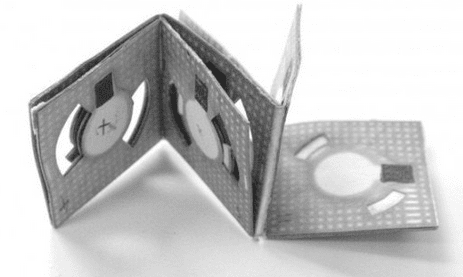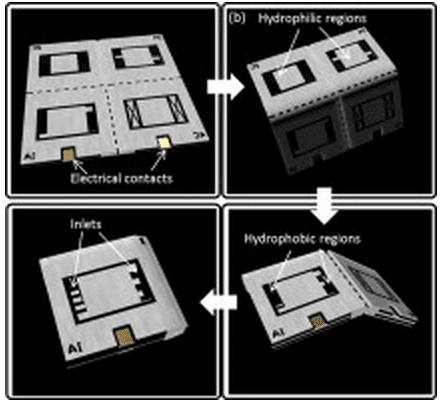Engineer Develops Origami Based Bacteria Powered Battery
Generally, Origami art is associated with making intricate designs and constructing the models of beautiful birds, animals, et al. But, this time Seokheun 'Sean' Choi, an engineer from Binghamton University, has built a bacteria-powered battery by applying origami techniques. Guess what? The cost of this novel 3-D paper-based battery is just five cents. Not only that, the device is also easily disposable. According to Choi, this low-cost device will be useful for those who are working in remote areas with limited resources. He also envisions a system integrated with a paper-based battery that will generate power (in microwatts) to operate a biosensor.

In this study, the engineer was able to fabricate an integrative paper-based battery by just putting a single drop of bacteria-containing liquid in which microbial metabolism occurs. The liquid can be from any easily available renewable and sustainable water or even wastewater source such as wastewater, municipal wastes, biomass, watershed, et al. The microbial respiration thus produces power, which is then used by the paper-based systems. Choi mentioned in a statement that external pumps or syringes are not at all required for incorporating the liquid in the paper as the cheap, biodegradable paper absorbs the solution by using capillary force. The bacterial fluid was introduced to the battery stack via two common inlets. Later on, the liquid moved to each battery.

Owing to origami techniques, the engineer was able to design a compact and stackable 3-D battery structures from 2-D sheets. The 3-D battery has the size similar to that of matchbook. Choi also created an economical air-breathing cathode on paper. It was done by spraying nickel with activated carbon onto one side of the paper. Whereas, the anode was screen printed along with carbon paints, thereby, forging a hydrophilic zone with wax boundaries. While using the battery, the stack of paper was unfolded in order to reveal all air-cathodes to the air. As a result of this operation, the cathodic reactions were maximized.
You can have a detailed look at the research paper which was published in the journal Nano Energy.
Source: #-Link-Snipped-# | #-Link-Snipped-#
In this study, the engineer was able to fabricate an integrative paper-based battery by just putting a single drop of bacteria-containing liquid in which microbial metabolism occurs. The liquid can be from any easily available renewable and sustainable water or even wastewater source such as wastewater, municipal wastes, biomass, watershed, et al. The microbial respiration thus produces power, which is then used by the paper-based systems. Choi mentioned in a statement that external pumps or syringes are not at all required for incorporating the liquid in the paper as the cheap, biodegradable paper absorbs the solution by using capillary force. The bacterial fluid was introduced to the battery stack via two common inlets. Later on, the liquid moved to each battery.
Owing to origami techniques, the engineer was able to design a compact and stackable 3-D battery structures from 2-D sheets. The 3-D battery has the size similar to that of matchbook. Choi also created an economical air-breathing cathode on paper. It was done by spraying nickel with activated carbon onto one side of the paper. Whereas, the anode was screen printed along with carbon paints, thereby, forging a hydrophilic zone with wax boundaries. While using the battery, the stack of paper was unfolded in order to reveal all air-cathodes to the air. As a result of this operation, the cathodic reactions were maximized.
You can have a detailed look at the research paper which was published in the journal Nano Energy.
Source: #-Link-Snipped-# | #-Link-Snipped-#
0
